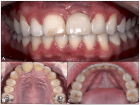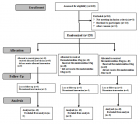Table of Contents
Climate change - a review of the mass balance of biogenic and fossil carbon
Published on: 22nd November, 2022
Trying to understand the causes of climate change can be confusing. On the one hand, methane (CH4) emissions from cattle, and methane emissions from food wastes in landfills, are said to contribute to greenhouse gases (GHGs) that drive climate change. People are working on feed additives for dairy cows to reduce their methane emissions. But, at the same time, cattle manure and food wastes can be fed into anaerobic digesters to convert these organic wastes to biogas; the resulting “renewable methane” or “renewable natural gas” (RNG), can be used in place of fossil natural gas and avoid extra GHG emissions and stop global warming. Can we have it both ways? Burning gasoline in our cars and trucks generates carbon dioxide (CO2), which is said to contribute to climate change. But more than 8 billion people on planet Earth, breathe in oxygen and exhale carbon dioxide every minute of the day. And so do all the other animals who live on this planet, breathe in oxygen and exhale carbon dioxide. Is our breathing also contributing to climate change, just as the emissions from our automobile tailpipes?It is time to step back from all the hype, evaluate the various sources of CO2 and CH4 being generated and review the “mass balance” of these gases in our atmosphere. Some of these are part of the natural biogenic carbon cycle and some are simply adding to the overall mass balance. What is driving climate change - excess GHGs from the biogenic carbon cycle, excess emissions from other sources, or both? Let’s take a fresh look at the available data. (Of course, water vapor also plays a part in the climate change story, as a “positive feedback” effect. As non-condensable GHGs rise in concentration and slightly warm the planet, slightly warming oceans add a bit more water vapor to the story and push the warming up a bit more). During the past few decades, a great deal of pertinent data has been carefully observed and recorded, by world-class scientists and engineers. This data is available in the public domain and is now easily available on the internet. These data sources come from reputable organizations, such as NASA (National Atmospheric and Space Administration), NOAA (National Oceanic and Atmospheric Administration), USGS (United States Geological Survey) and international organizations such as the “Global Carbon Project” and “Our-World-in-Data”. How much of the growing concentration of CO2 (and CH4) in our atmosphere can be attributed to out-of-control emissions of biogenic carbon? How much of the CO2 rise can be attributed to fossil fuel emissions: 10%, 50%, 90%, or more? The available data appear to show that the emissions from burning fossil fuels, more than account for all of the rise of carbon dioxide in our atmosphere during the past 60 years, or longer. In comparison, the biogenic carbon cycle data seem to be very consistent, year after year, decade after decade and have little or no impact on climate change. But, let’s have a closer look at the available data, and let the data speak for itself.
Diagnostic evaluation of nasopharyngeal swab and saliva kits against SARS-CoV-2: Adequate rapid screening is deemed necessary to overcome COVID-19 Pandemic
Published on: 16th September, 2022
OCLC Number/Unique Identifier: 9625089265
SARS-CoV-2 is the virus associated with the disease called COVID-19 and become a global pandemic. The only way to prevent its severe scenarios is through timely and rapid testing. In comparison to more time taking gold-standard RT-PCR testing, rapid diagnostic kits are used. For better prevention and diagnosis of SARS-CoV-2, the analysis of rapid diagnostic kits' accuracy and specificity is necessary. This study is meant to assess and examine the viability, responsiveness, and explicitness of quick antigen distinguishing nasopharyngeal swabs (NPS), and saliva-based units. The study was conducted on 200 suspected COVID-19 patients from Islamabad, 100 of which were RT-PCR positive while 100 were RT-PCR negative. For the analysis of Rapid diagnostic COVID-19 kits (RDT), nasopharyngeal swabs (NPS) and saliva samples were taken from the RT-PCR positive and negative patients. Among 100 RT-PCR positive patients, 62% were males (19 - 91 years), 34% were females (20 - 78 years) and 4% were children (6 - 17 years). False-negative results were significantly more observed in saliva-based RDTs of the sample (49%) as compared to nasopharyngeal swab RDT (38%). There were 2% invalid results in saliva-based RDT and 3% invalid results in Nasopharyngeal swab RDT. While among 100 RT-PCR negative patients 69% were males (19 - 80 yrs), 27% were females (18 - 77 yrs) and 4% were children (12 - 16 yrs.). False positive results were significantly more in saliva-based RDT (22%) as compared to Nasopharyngeal swab RDT (13%). The sensitivity and specificity of saliva-based RDT were 67% and 87% respectively while that of Nasopharyngeal swab (NPS) was 72% and 82% respectively, both of which were less than the gold standard RT-PCR sensitivity demanding the introduction of more sensitive RDT kits in Pakistan for accurate detection of COVID-19.
Centralized aerobic-anaerobic energy balance compensation theory perspective in biomedicine
Published on: 13th September, 2022
OCLC Number/Unique Identifier: 9617835348
Recently announced centralized aerobic-anaerobic energy balance compensation (CAAEBC) theory has already demonstrated achievements in the treatment of arterial hypertension (AHT), diabetes myelitis (DM) and osteochondrosis. Such demonstration lifts the necessity to check the applicability of this theory to other non-communicable diseases (NCDs) and develop the proper way to model the main idea of CAAEBC.
Effect of fresh red grape juice and grape fermentative product on oxidative-stress in human erythrocytes in vitro
Published on: 26th January, 2022
OCLC Number/Unique Identifier: 9403421666
Introduction: Oxidative stress is a phenomenon induced by an imbalance between production and the biological system's ability to readily detoxify oxygen reactive species (ROS) in cells. It has been shown that grape juice can reduce oxidative stress due to the presence of polyphenols. The aim of this study was to evaluate the effect of fresh red grape juice and grape fermentative product on oxidative stress in human erythrocytes.Methods: 5 ml of blood from 125 healthy individuals as control group collected in EDTA containing tubes. To perform biochemical assays, erythrocytes were incubated at 37 ºC for different times including 4, 24, 48, and 72 hours in the presence or absence of grape juice and grape red wine in amounts of 5 ml. Results: Grape juice and grape red wine reduced lipid peroxidation and increase of thiol groups, and total antioxidant capacity after 24 hours of treatment (p < 0.05). Also, the activity of catalase enzyme was increased 4 and 24 hours after treatment with red wine and grape juice, respectively. Conclusion: Grape juice and grape fermentative product may improve the antioxidant power of erythrocytes. This may lead to reducing the risk of free-radical damage and chronic diseases. However, more research with a higher number of samples is necessary to confirm the antioxidant effect of grape juice and red wine on human erythrocytes.

HSPI: We're glad you're here. Please click "create a new Query" if you are a new visitor to our website and need further information from us.
If you are already a member of our network and need to keep track of any developments regarding a question you have already submitted, click "take me to my Query."

















































































































































